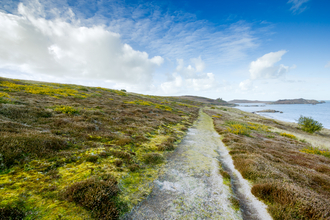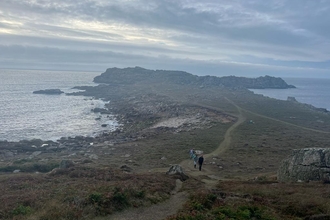
Chapel Down
At the eastern end of St Martin’s, Chapel Down plateau is one of the best examples of ‘waved’ maritime heathland across the archipelago. The steep granite cliffs are home to breeding Manx…
9 results

At the eastern end of St Martin’s, Chapel Down plateau is one of the best examples of ‘waved’ maritime heathland across the archipelago. The steep granite cliffs are home to breeding Manx…

Connected to the east side of St Agnes by a tombolo (known as ‘The Bar’), Gugh is a small inhabited island. It is just 1km long and rises to 34m above sea level at its most northern point on…

Situated just to the east of Hugh Town, Lower Moors is one of the first really wild places you encounter on St Mary's after leaving the town. Lying between Telegraph Road and Trench Lane (…

Overlooking the south end of Bryher, the uninhabited island of Samson is easily recognisable by the rise of its two hills separated by a sandy neck. The island is important for breeding seabirds,…

At the most northern end of Bryher, Shipman Head is one of the wildest parts of the island, being exposed to the wild Atlantic to the north and west. The ridge runs south towards the plateau of…
This small group of uninhabited islands including St Helen’s, Northwethel and Foreman’s Island are partially sheltered by Tresco and St Martin’s, but the rocky islet of Men-a-Vaur to the north is…

Nestled between Tresco to the west and St Martin’s to the east, Teän is a beautiful uninhabited island composed of a series of granite tors. The highest, Great Hill, rises to over 40m above sea…

The Western Rocks are the last post before the wilds of the Atlantic stretch all the way to America. Marked by the iconic Bishop Rock Lighthouse, they are lashed by wind and wild storms. These…

Wingletang Down is one of the wildest places on the Isles of Scilly. Towering granite rock formations intersperse with waved heathland, supporting a variety of rare plants. It's easy to feel…
9 results